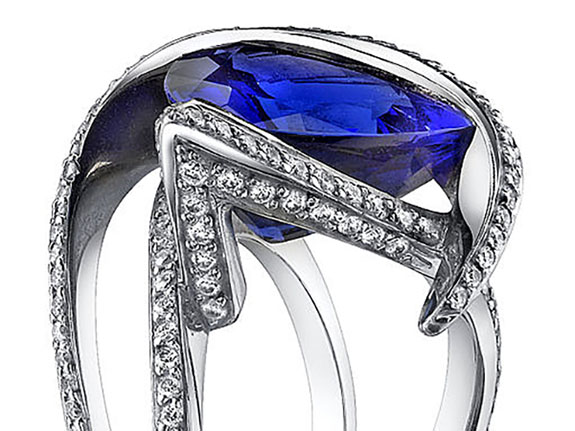December 1st, 2022
Fifty-five years ago, a Maasai tribesman named Jumanne Ngoma happened upon a cluster of intense blue-violet crystals in the foothills of Mount Kilimanjaro in Tanzania. At first glance, they appeared to be sapphires, but it was later revealed that the stones were a never-before-seen variation of zoisite.

The mesmerizing mineral quickly caught the attention of Tiffany & Co., which launched a campaign to promote the new gem. The marketing team at Tiffany was concerned the name “zoisite” sounded very much like “suicide,” so it came up with “tanzanite,” a name that would honor Tanzania, the only place on earth where tanzanite can be found.
Tiffany’s 1960s-era marketing campaign earned tanzanite the noble title of “gem of the 20th century” and, in 2002, the American Gem Trade Association added tanzanite to the jewelry industry’s official birthstone list. Tanzanite joined turquoise and zircon as the official birthstones for December.
Tanzanite is said to be 1,000 times more rare than diamonds due the fact that tanzanite is mined in an area that measures 2km wide by 4km long and that the remaining lifespan of the mine is said to be less than 25 years.
Despite tanzanite’s immediate commercial success, Ngoma didn't reap any financial gain from his discovery until April of 2018, when Tanzanian President John Magufuli presented the then-78-year-old with a reward of 100 million shillings (about $44,000) from the Tanzanian government. That amount was nearly twice the annual salary of an average Tanzanian. Ngoma, in ill health and partially paralyzed, passed away in January of 2019. Obituaries celebrated him as a national hero.
Tanzanite’s exquisite color is an intoxicating mix of blue and purple, unlike any other gemstone. Tanzanite comes in a wide range of hues, from light blues or lilacs, to deep indigos and violets. The most valuable tanzanite gemstones display a deep sapphire blue color with highlights of intense violet. The Smithsonian’s website explains that tanzanite exhibits the optical phenomenon of pleochroism, appearing intense blue, violet or red, depending on the direction through which the crystal is viewed.
The platinum ring shown, above, is an award-winning piece by designer Mark Schneider. It features a 9.43-carat trillion tanzanite, accented by 1 carat of white diamonds. The ring captured an AGTA Spectrum Award 2003 in the Evening Wear category.
Credit: Image by Mark Schneider, CC BY-SA 3.0, via Wikimedia Commons.

The mesmerizing mineral quickly caught the attention of Tiffany & Co., which launched a campaign to promote the new gem. The marketing team at Tiffany was concerned the name “zoisite” sounded very much like “suicide,” so it came up with “tanzanite,” a name that would honor Tanzania, the only place on earth where tanzanite can be found.
Tiffany’s 1960s-era marketing campaign earned tanzanite the noble title of “gem of the 20th century” and, in 2002, the American Gem Trade Association added tanzanite to the jewelry industry’s official birthstone list. Tanzanite joined turquoise and zircon as the official birthstones for December.
Tanzanite is said to be 1,000 times more rare than diamonds due the fact that tanzanite is mined in an area that measures 2km wide by 4km long and that the remaining lifespan of the mine is said to be less than 25 years.
Despite tanzanite’s immediate commercial success, Ngoma didn't reap any financial gain from his discovery until April of 2018, when Tanzanian President John Magufuli presented the then-78-year-old with a reward of 100 million shillings (about $44,000) from the Tanzanian government. That amount was nearly twice the annual salary of an average Tanzanian. Ngoma, in ill health and partially paralyzed, passed away in January of 2019. Obituaries celebrated him as a national hero.
Tanzanite’s exquisite color is an intoxicating mix of blue and purple, unlike any other gemstone. Tanzanite comes in a wide range of hues, from light blues or lilacs, to deep indigos and violets. The most valuable tanzanite gemstones display a deep sapphire blue color with highlights of intense violet. The Smithsonian’s website explains that tanzanite exhibits the optical phenomenon of pleochroism, appearing intense blue, violet or red, depending on the direction through which the crystal is viewed.
The platinum ring shown, above, is an award-winning piece by designer Mark Schneider. It features a 9.43-carat trillion tanzanite, accented by 1 carat of white diamonds. The ring captured an AGTA Spectrum Award 2003 in the Evening Wear category.
Credit: Image by Mark Schneider, CC BY-SA 3.0, via Wikimedia Commons.


